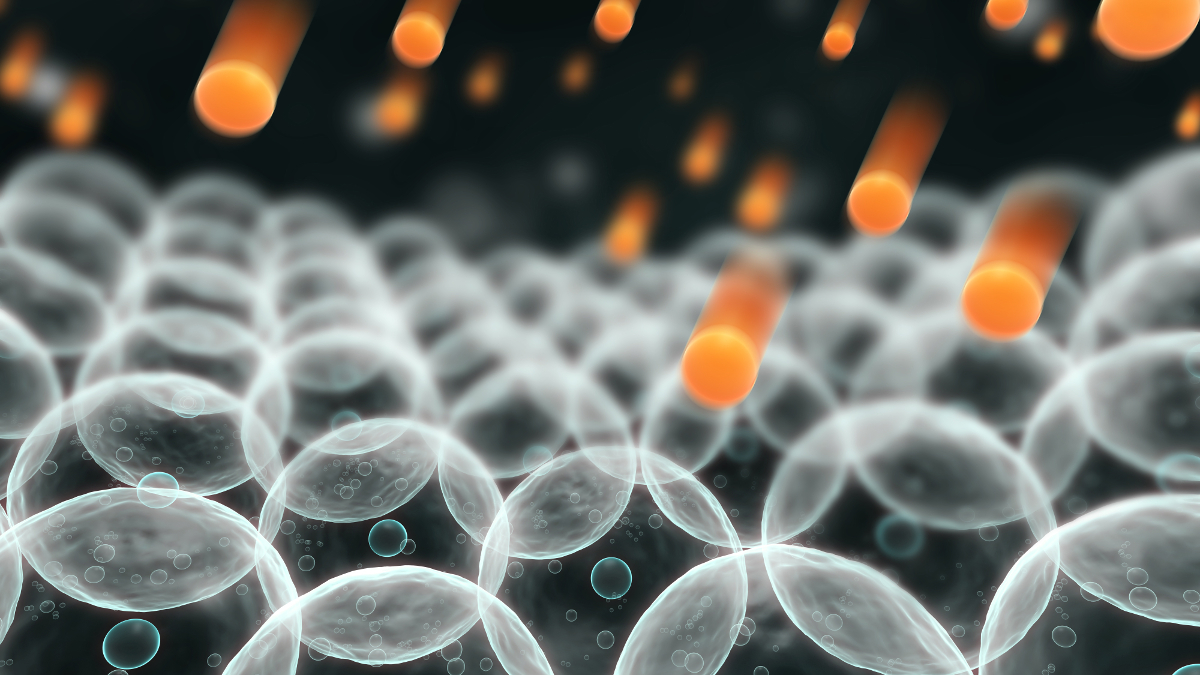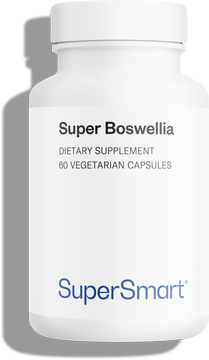What is oxidative stress?
Oxidative stress is what happens when our cells are attacked by free radicals. In excess, these unstable molecules overwhelm our defenses, damaging the body. Here we take a look at their sources and consequences, and the ways in which we can help keep them under control.

What generates free radicals?
Cells are the site of one of the body’srespiration processes: oxygen is used by cells to ensure they, and the body as a whole, function properly. This cellular respiration occurs in the mitochondria, the cells’ powerhouses.
When mitochondria use oxygen in cellular respiration, changes occur in the surrounding molecules. They lose an electron, and as a result, become unstable molecules called free radicals.
These unpaired electrons frantically try to restore their stability by stealing an electron from a neighbouring molecule, which in turn tries to do the same. This quickly results in a chain reaction as the body finds itself unable to withstand this multitude of unstable particles. (1)
Free radicals: environmental factors
It’s when free radicals are generated by external factors that the body becomes overwhelmed. And there are many such factors:
- smoking;
- alcohol;
- exposure to the sun’s UV rays;
- pollution;
- a diet high in ‘bad’ fats and sugar;
- chronic stress;
- certain drugs
These factors are responsible for excessive circulation of energy in cells which causes, or accelerates, the production of free radicals. The excesses of modern lifestyles are thus often cited as a cause of oxidative stress (2).
The effects of oxidative stress on the body
Oxidative stress is involved in a number of mechanisms that are damaging to health. As mentioned, free radicals try to restore their stability by attacking and stealing electrons from surrounding molecules.
These attacks result in a widespread cascade of denaturation - of DNA, proteins and lipids: tissues become damaged and no longer function properly. Chain reactions therefore lead to defective functioning of the body in general. For that reason, oxidative stress is recognized as one of the primary mechanisms of aging (3).
While we may be more aware of the visible effects, such as damage to the health and elasticity of our skin, free radicals also produce unseen consequences within the body which may worsen. The nervous system is one such example, with deteriorations in neurodegenerative diseases such as Alzheimer’s and Parkinson’s disease. (4)
The cardiovascular system is also a victim: in excess, free radicals affect the arteries, veins, heart … Oxidative stress causes structural and functional damage and can lead to atherosclerosis and coronary artery disease … (5)
Note
Most of the time, free radicals are discussed in terms of the damage they do to the body. However, it’s important to understand that they are also necessary for the immune system. This has been observed in the case of viral infections in particular (6). Free radicals also help speed up the healing of wounds … (7). A paradox that’s often overlooked!
How can oxidative stress be combatted naturally?
The body is naturally equipped with an antioxidant function. Certain compounds are able to neutralize free radicals and restrict the chain reaction. Glutathione, enzymes such as peroxidase, catalase 12,500 and superoxide dismutase, as well as vitamins C and E are all antioxidants naturally present in the body.
To help combat oxidative stress, there are several simple habits you can adopt. Give up smoking, and reduce your alcohol consumption and exposure to the sun as much as possible.
In addition, eat a balanced diet high in antioxidants. For this, you need to prioritise fruits and vegetables in general, as well as aromatic herbs and spices , ‘good’ fats (avocados, dried fruit, vegetable oils, oily fish…), and algae… Limit your intake of animal fats (meat, charcuterie, dairy foods) and products with added sugar. These are the principles of an antioxidant diet.
Concentrated dietary supplements can also provide the body with significant antioxidant power. Polyphenols, glutathione, carnosine, ergothioneine... Many molecules naturally present in the body can be boosted through supplementation to give you extra ammunition in the fight against free radicals!
References
- Vladimir L. Voeikov.The Journal of Alternative and Complementary Medicine.Mar 2006.ahead of print. Published in Volume: 12 Issue 2: March 27, 2006.
- J. Haleng, J. Pincemail, J.O. Defraigne, C. Charlier, J.P. Chapelle, Le stress oxydant, Rev Med Liege 2007; 62 : 10 : 628-638.
- Finkel, T., Holbrook, N. Oxidants, oxidative stress and the biology of ageing. Nature 408, 239–247 (2000).
- Desport, Jean & Couratier, Philippe. (2002). Stress oxydant et maladies neurodégénératives. Nutrition Clinique Et Metabolisme - NUTR CLIN METAB. 16. 253-259.
- Bruno Baudin . Stress oxydant et pathologies cardiovasculaires. MT Cardio. 2006;2(1):43-52.
- Soucy-Faulkner A, Mukawera E, Fink K, Martel A, Jouan L, Nzengue Y, Lamarre D, Vande Velde C, Grandvaux N. Requirement of NOX2 and reactive oxygen species for efficient RIG-I-mediated antiviral response through regulation of MAVS expression. PLoS Pathog. 2010 Jun 3;6(6):e1000930.
- Velarde MC, Demaria M, Melov S, Campisi J. Pleiotropic age-dependent effects of mitochondrial dysfunction on epidermal stem cells. Proc Natl Acad Sci U S A. 2015 Aug 18;112(33):10407-12.
Keywords
3 Days
A Product worth waiting for when not…
A Product worth waiting for when not available and then arriving as a surprise!
DOMINIC
5 Days
On time shipping
On time shipping
GEORGE Verne
7 Days
Ordering was easy and the product was…
Ordering was easy and the product was delivered with no problems. Appreciated that I was notified when it would arrive. Thanks!
MascarC
12 Days
Great customer service - responsive …
I ordered from them and my item was unavailable for sometime. I was super happy when they reactivated my order and shipped my item which arrived very quickly. Great customer service.
Ruth Rueter
13 Days
Super fast shipping
Super fast shipping
Donald Borling
16 Days
Reputable companysearch and the number of…
The research and the number of selection of products.
NAKHJAVAN Shervin
29 Days
The Anti Aromatase is a great product
The Anti Aromatase is a great product. You just need to have constant inventory. Recently this product has been out of stock.
GEORGE Verne
31 Days
Great help on chat
Great help on chat. Knowledgeable and friendly.
Jason Argos
34 Days
Customer service was fast and friendly.
Customer service helped to stop the transaction process of the subscription. I appreciated that.
Greenie
35 Days
I order here due to the high quality of…
I order here due to the high quality of the products and the quick delivery of items - thank you
Barbara J
36 Days
SuperSmart's Eye Pressure supplements: highly recommended!
I purchase SuperSmart's Eye Pressure supplements regularly for over 5 years, and gotta say they are truly a wonderful product for my Glaucoma. Highly recommended if you have eye pain from your Glaucoma.
D. Martinez
41 Days
Quick service
Quick service
MONELL
41 Days
Speedy service.
Speedy service.
ROSENTHAL Marvin
45 Days
Clear website- Efficient
Clear website. Excellent search engine and fast delivery!
Mohamad Hussein
48 Days
They have great products.
They have great products.
Vickie





